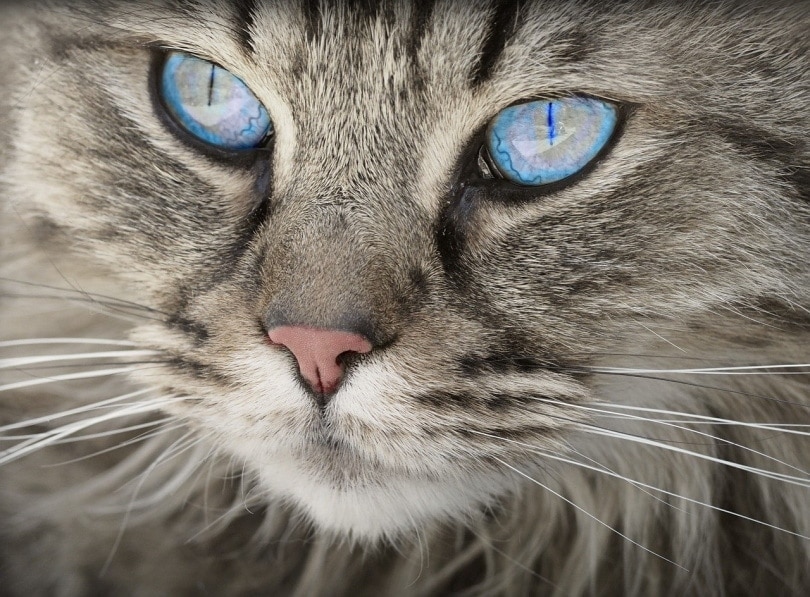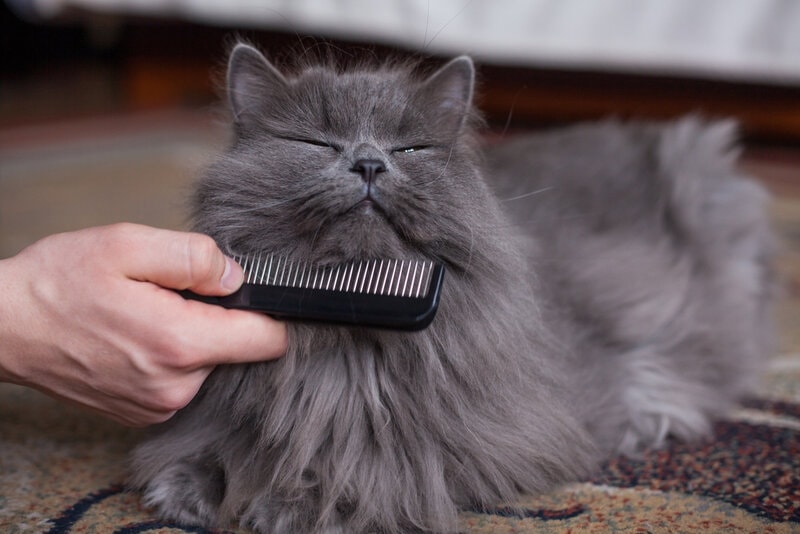Suphalak Cat: Info, Pictures, Characteristics & Facts

Updated on
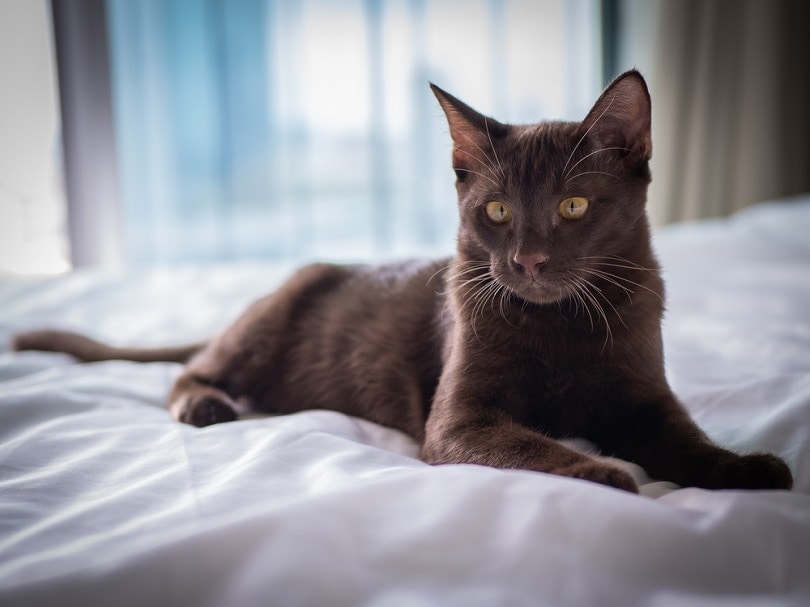
| Height: | 9 – 13 inches |
| Weight: | 8 – 15 pounds |
| Lifespan: | 12 – 15 years |
| Colors: | Reddish brown |
| Suitable for: | Singles, families |
| Temperament: | Friendly, intelligent, loves interacting with humans |
Often confused with the Burmese sable or Havanna Brown, the Suphalak is a beautiful brown cat whose origin dates to the 18th century. The Suphalak’s coat appears reddish-brown in the sunshine, but it has a chocolate appearance in lower light. The cat has brown whiskers, brown nose leather, bright gold or yellow eyes, and brown paw pads with a pink hue. It’s similar in body structure to Burmese, but a purebred Suphalak does not have dark points on the face and feet like the Burmese.
Suphalaks are affectionate cats who love interacting with humans. They’re suitable for families and singles, but they suffer from separation anxiety when left alone for too long. Although caring breeders have preserved the species, Suphalaks are only available in Thailand and the United States. To preserve the brown coat color, breeders can only mate Suphalaks with native Thai cats such as the Thai Burmese, Konja, and chocolate point Siamese. Adopting a Suphalak may be difficult due to its rarity, but anyone lucky enough to own one will undoubtedly enjoy several years of dog-like companionship and love.
Suphalak Kittens
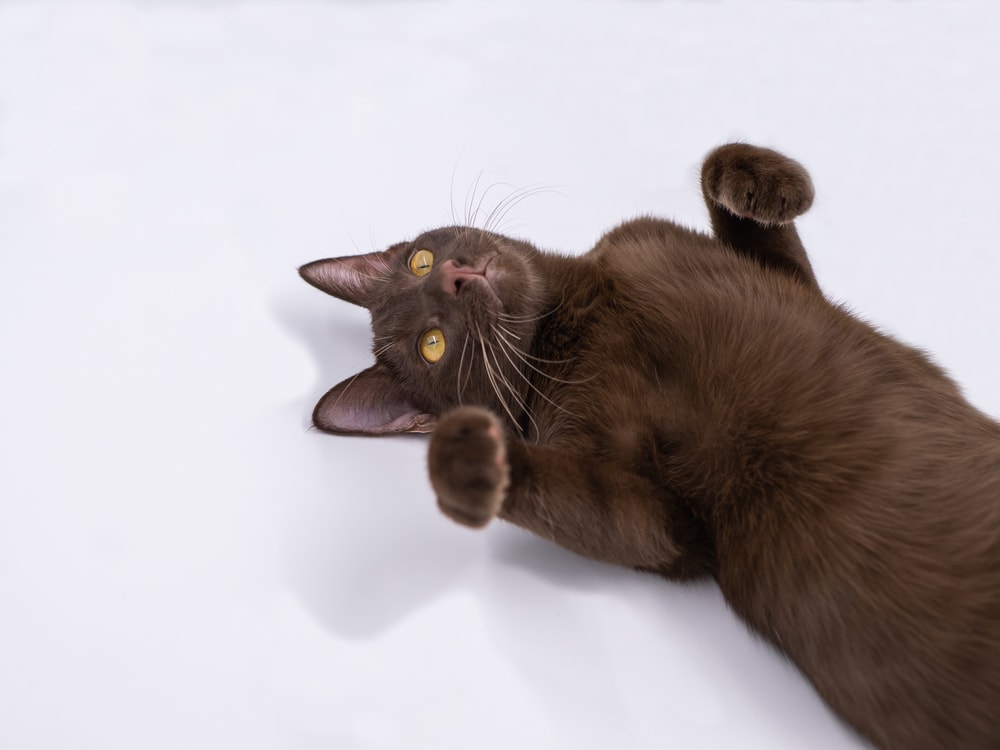
As one of the rarest cat breeds on the planet, Suphalak kittens are not easy to find. It’s possible that one could show up at a shelter if its owner abandoned it, but considering the small population, it’s not likely.
3 Little-Known Facts About the Suphalak
1. Only one Suphalak cat has ever been exported from Thailand.
Until 2013, only one Suphalak was active in a breeding program in Thailand. The breeder Kamnan Preecha Pukkabut attempted to expand the number of Suphalak cats in the early 2000s but was unsuccessful. However, a female named Thonga was exported to the United States to a breeder in Waterford, Michigan, in September 2013. In 2015, Thonga was the first cat officially recognized by the American Cat Association as a Suphalak.
2. The rareness of the breed is often attributed to a humorous legend.
When the Burmese army sacked the capital in 1767, they captured the royal family and looted their valuables. After reading passages about Suphalak cats that described them as rare creatures that bring wealth to the Tamra Maew, the king ordered his people to capture all the Suphalaks and return them to Burma. The story is a myth, but it shows that Thai cat breeders have a sense of humor about the Suphalak’s tiny population.
3. The International Maew Boran Association (TIMBA) in 2014 to preserve Thailand’s heritage cats and study the genetics of Suphalak cats.
TIMBA is dedicated to increasing the Suphalak cat’s population, promoting the breed to the west, providing registries for Suphalaks and Konja cats, and maintaining breeding and cattery standards for breeders.
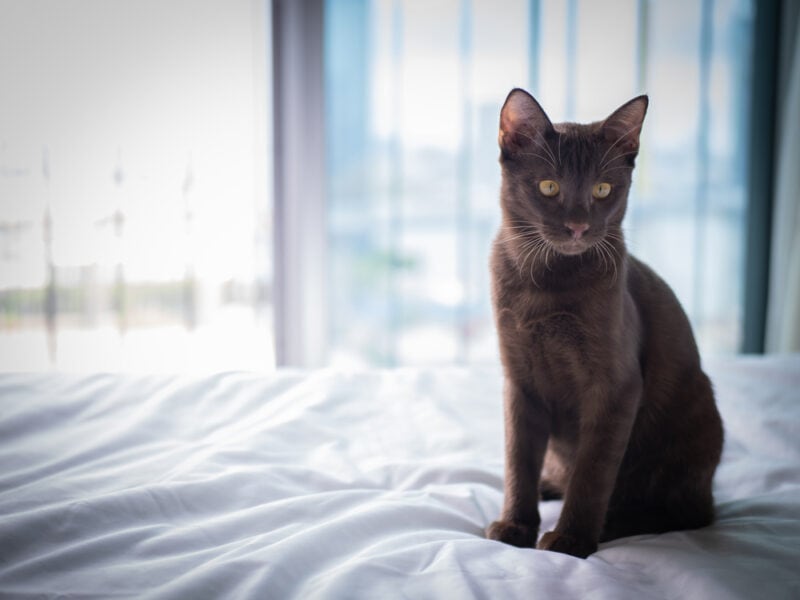
Temperament & Intelligence of the Suphalak
Like many Thai cats, the Suphalak is affectionate and lively. It loves being around humans, but the animal is not ideal for those seeking a calm kitty that spends most of the day relaxing on the couch. Suphalaks are high-energy creatures who are not satisfied with a few simple toys. They’re smart, curious, and enjoy exploring their home environment. Due to the cat’s rarity, they should be kept indoors. Suphalaks are one of the most expensive breeds, making them a prime target for cat thieves and unscrupulous breeders.
One of the few disadvantages of owning a Suphalak is their need for attention. Frequent travelers are not the best owners for the breed because the cats cannot tolerate being away from their families. If they feel that they’re being neglected, they can become destructive and take out their stress on furniture and personal items.
Are These Cats Good for Families? 👪
Suphalaks are perfect for active families who give their pets love and attention every day. Single pet parents working at home would also make excellent caretakers as long as the cat has plenty of room to run around. A small apartment is not suitable for a Suphalak unless the cat can burn off calories from supervised walks around the neighborhood. Unlike other cat breeds that dislike noisy living arrangements, Suphalaks adore large families and are not prone to running off to hide for alone time. They need a lot of attention and require more daily play sessions than other cats. Family friends and new visitors do not cause the cat to scurry when they arrive, and most Suphalaks will happily greet their guests at the door.
Suphalaks are well-behaved around children, and most establish life-long bonds with younger humans. Socializing the cat with small children is vital to prevent any incidents. They’re not aggressive, but their curiosity and playfulness could get them into trouble with toddlers. They could accidentally bump into an infant when they’re running around the house, but you can train them to understand their boundaries.
Does This Breed Get Along with Other Pets?
Suphalaks get along well with other cats and dogs. Since they enjoy company, another pet can keep them occupied when the humans are busy. However, they’re likely to get jealous if you spend too much time with another pet. Suphalak cats do not have a high prey drive, but they will chase after a small animal if they have the opportunity. Keeping a bird, rodent, or reptile in the same house may not be a wise decision. The cats are intelligent enough and agile enough to open a door or sneak into an unauthorized room when you’re not looking.
Things to Know When Owning a Suphalak
Food & Diet Requirements 
Suphalak cats do not require specialized diets, but they need high-protein meals to fuel their energy needs. Several pet food makers claim to offer high-protein cat chow, but you have to look closely at the source of protein to determine if it’s suitable for your pet. Protein from poultry, beef, and seafood is preferable to meals loaded with plant-based proteins. Suphalaks, like all domesticated and wild cats, require a carnivorous diet composed primarily of meat, fat, minerals, vitamins, and amino acids.
A combination of high-quality dry meals and high-protein wet food will keep a Suphalak happy and healthy. Dry kibble contains more protein and nutrients than wet varieties, but adding wet food will ensure your Thai kitty stays hydrated. For cat treats, look for products without preservatives, fillers, or artificial flavors. In recent years, the premium pet food market has expanded significantly. You can now find raw, fresh, and grain-free treats from online distributors and local pet stores.
Exercise 🐈
To maintain the cat’s exercise needs, you’ll probably spend more money on cat supplies than you would with other breeds. Suphalaks need mental and physical stimulation to keep them happy and plenty of space to leap, run, and climb. A durable cat tree will satisfy their desire to climb, but their favorite games involve human participation. They enjoy fetching toys and playing games like hide and seek. Suphalaks can get bored quickly, and it’s best to have a variety of toys to keep them interested.
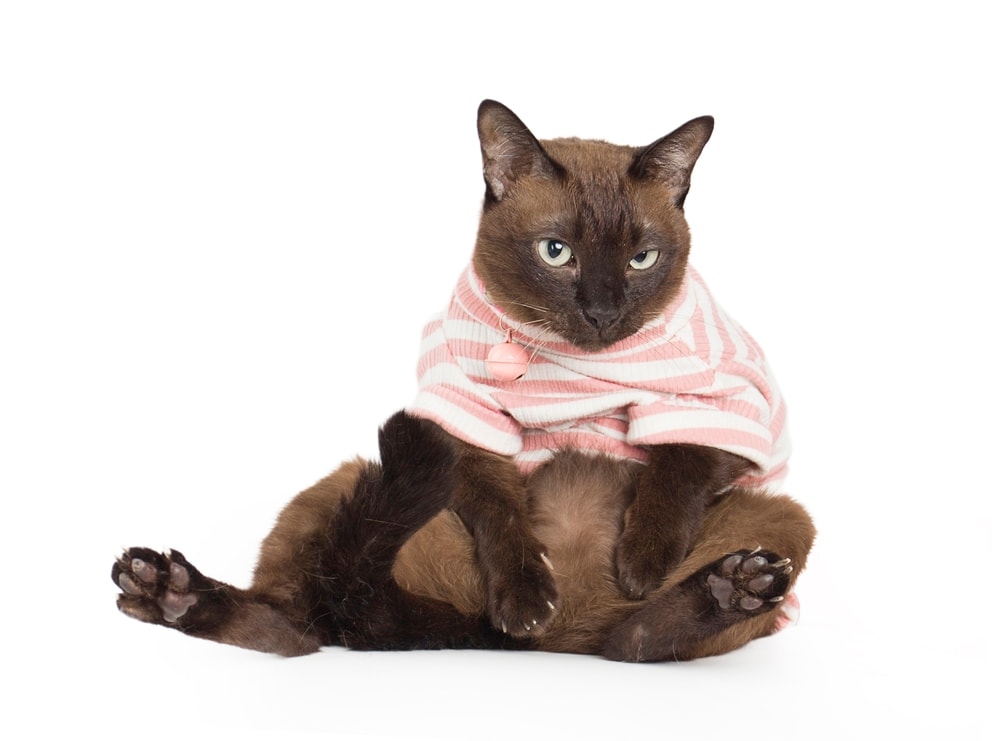
Training 🧶
Teaching your pet to use the scratching post or litter box will not be an issue with a Suphalak. The cats are fast learners and respond to training without problems. They can be trained to go on walks with a harness and come to you when you call them. Suphalaks have personalities similar to canines, and you can teach them to retrieve toys or chase you around the yard or living room.
As trainers and veterinarians will tell you, positive reinforcement is the ideal method for faster results and happier felines. Using a treat as a reward and frequently voicing your approval is more effective than aggressive techniques. Yelling at a Suphalak will only scare the cat and increase anxiety.
Grooming ✂️
Suphalaks have silky short-haired coats that are simple to maintain, but their fur will look its best when you brush it at least twice a week. Brushing removes loose hair that would typically end up on your floor and furniture, and it reduces the occurrence of hairballs. To keep the animal’s ears healthy, clean them at least once a month with a moistened microfiber towel, and check them regularly for ear mites.
Trimming nails can be problematic with some breeds, but Suphalaks enjoy being handled and do not mind having their claws trimmed. If your pet cannot stand still during trimming, you can provide a treat and ask a friend to hold and calm the animal. Before brushing the cat’s teeth, talk to your veterinarian for tips and only purchase cat-safe pastes or dental wipes.
Health and Conditions 🏥
The Suphalak is a new breed with a tiny population, but the cat does not appear to have any vulnerabilities to specific genetic diseases. When the species becomes more common, veterinary scientists will better understand the animal’s genetics and overall health. Visiting the veterinarian at least twice a year and staying up-to-date on vaccinations will ensure that the Suphalak stays healthy.
Male vs Female
Males can weigh up to 15 pounds, but most females weigh a few pounds less. Males and females are active and loving, and they do not display any personality differences. However, a fixed Suphalak is less likely to spray indoors, escape your home, or exhibit destructive behavior.
Final Thoughts
With loads of energy and undying love for their owners, Suphalak cats would make excellent pets for any cat owner. They’re one of the rarest breeds in the world, and you may have trouble adopting one. As the ancient texts describe the cat, the Suphalak is “as rare as gold.” However, as the cat’s population increases, hopefully, the breed will become more available. They’re beautiful, energetic felines that love to play and hang around their families.
Featured Image Credit: Nattakorn Suphatheera, Shutterstock


